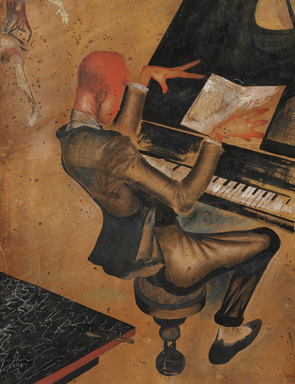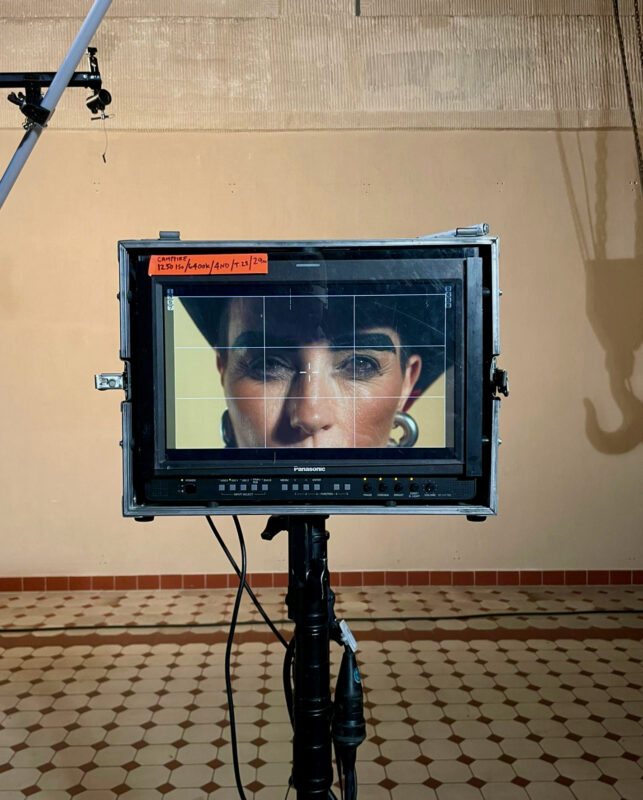
Image:Yuri Pimenov, The Pianist. Est. $500/700,000. Photo: Sotheby’s.
Sotheby’s 12 April 2011 auction of Russian Art in New York will feature paintings and works of art with exceptional provenance and art-historical importance. The paintings on offer are highlighted by works from iconic Russian artists of the 19th and 20th centuries, including Ivan Aivazovsky, Isaac Levitan, Nicholas Roerich, Boris Grigoriev, and Yuri Pimenov, whose canvas The Pianist leads an impressive group of works by the Soviet Realist artist (est. $500/700,000*). The works of art are led by An Important and Rare Micromosaic Table by Gioacchino Barberi after Alexander Orlovski Made for the Russian Court 1830-33, one of the rarest and most extraordinary micromosaic tabletops known to exist, which was likely made for Nicholas I, Emperor of Russia from 1825-55, or a member of his court (est. $400/600,000). The sale will be on exhibition in Sotheby’s York Avenue galleries beginning 7 April, alongside the auctions of Magnificent Jewels and Important Watches.
Russian Paintings
The 19th-century paintings on offer in the April auction include Isaac Levitan’s Early Spring at Abramtsevo, which stands among the artist’s largest watercolors known to exist (est. $400/600,000). Painted in 1893 at the Abramtsevo artist colony, the work is a prime example of why Levitan is considered one of the greatest of all 19th-century landscape painters. The Road to Gurzuf, Crimea, circa 1878 is a testament to Ivan Aivazovsky’s deep attachment to his native Crimea (est. $300/400,000). While he depicted the region throughout his career, the present landscape may be counted among his most charming.
Russian paintings from the 20th century are led by works from Nicholas Roerich and Boris Grigoriev. In 1919 Roerich traveled to London, where he was commissioned to make set designs for Nikolai Rimsky-Korsakov’s medieval epic Sadko at the Royal Opera House. Fresh to the market from a private collection, The Novgorod Market from Sadko from 1920 is one of a few extremely rare designs for this unrealized production, and a prime example of Roerich’s work for the theater (est. $400/600,000). The composition is framed by a proscenium, and when turned vertically it reveals forms otherwise concealed in the panorama. This imagery underscores the artist’s early interest in Symbolist painting, and prefigures the forms, often spiritual, that he would later embed in his landscapes.
Boris Grigoriev’s exceptional Still Life with Candle and Pot has been traced to the mid-1920s, an extremely productive period for the artist when he traveled internationally and exhibited widely (est. $400/600,000). The work highlights Grigoriev’s technical genius, creating drama through the dynamic treatment of commonplace items. This work was likely exhibited in South America in the late 1920s, when Grigoriev was invited to Santiago by the Chilean government.
Following the new auction record for Yuri Pimenov set in Sotheby’s November 2010 sale of Important Russian Art in New York, the April auction will feature a group of works from the Socialist Realist artist. Worker’s Brigade from 1968 (est. $350/450,000) is closely related in style and subject matter to Pimenov’s monumental First of May Celebration, 1950, which achieved the record-setting price of $1,538,500 in November. The Pianist (est. $500/700,000) is an incredibly dynamic composition that is one of two examples on offer of the artist’s work from the 1920s. The painting reveals the influence of the German Expressionists on the artist during this brief but revolutionary period of his career.
Paintings from the 20th century are also led by Vasily Shukhaev’s Maternity, which may be counted among the most spectacular accomplishments of the artist’s career (est. $500/700,000). The seated mother nursing her child evokes iconographic images of Madonna and the Christ child enthroned, chosen by the artist to emphasize the important role of the mother in Soviet culture. Nude Sitting on Stool was painted by Vladimir Lebedev in 1933–a time when his work was receiving harsh criticism in the wake of stricter guidelines from the government on Soviet artists (est. $300/400,000). The work is one of a very limited number of Lebedev’s nudes that were long-hidden in private collections in St. Petersburg.







